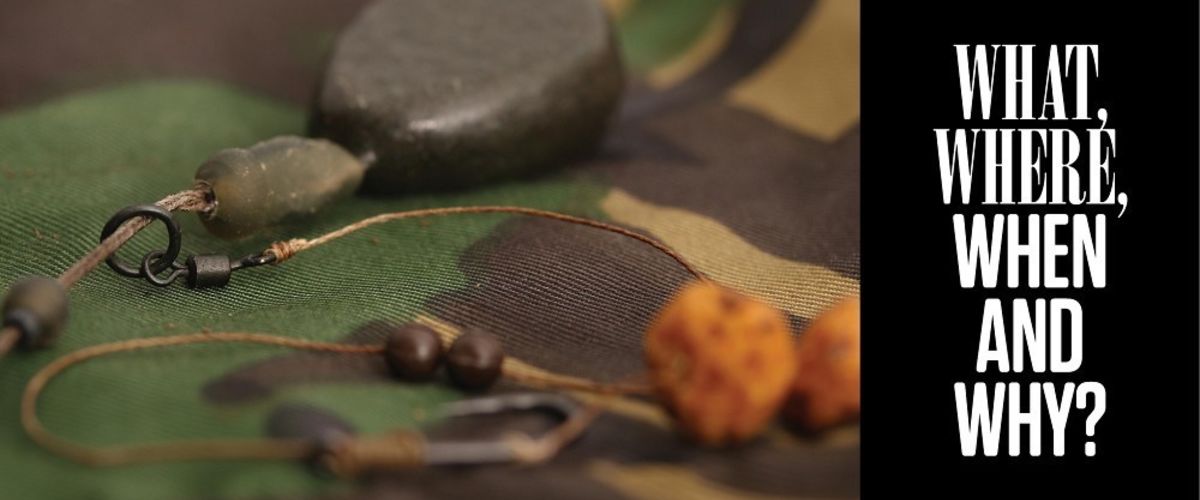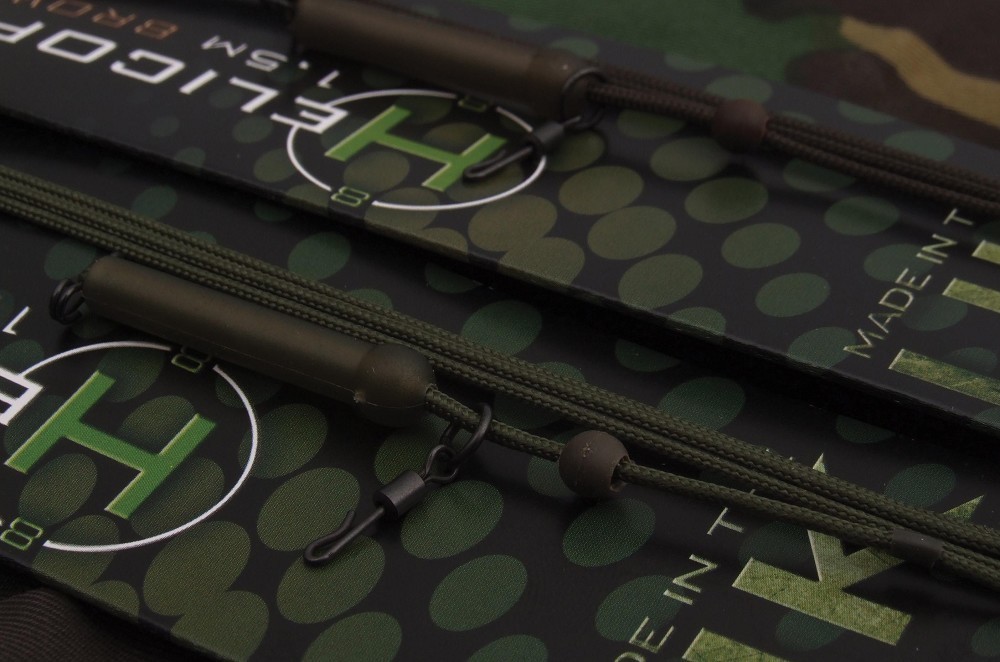
Philosophical Musings About Rigs
Lewis Read discusses what, where, when and why when it comes to rigs.
Despite the overly exuberant wittering of a deranged loon enthusiastically extolling the virtues of rigs we use and recommend, the videos we post up on the Gardner website and YouTube channel really only convey one part of the rig puzzle. They’re a technical snapshot of what you need to construct a certain presentation so it works, but I don’t often get the chance to expand on the basic rig design concepts as we try to keep the pieces short and sweet. Lewis Read
The big bit, that I guess we assume most anglers will fathom out on their own eventually, is why choose one over the other. The single biggest influence is, inevitably, the topography and nature of the lakebed in general and then when you know the lake better it’s down to spots and zones. You NEED to know whether it is flat bottomed or heavily featured and whether it’s hard ground or soft sediment. Finally, is there significant weed and is it in bands, defined beds, or bloody everywhere.
Knowledge is king!
There is no short cut but if you keep your eyes open you can normally get a good idea of what to expect… So, say you’ve rocked up on a venue and on doing a circuit was there weed blown down onto the windward end? Just being mindful of keeping an eye on stuff like this is grandiosity described as ‘watercraft’ , but in reality it’s using your nodule to build up an idea of what’s going on.
Sometimes you’ll be happy to set-up in an area and lead the granny out of it. Other times (if you’ve seen a show) you’ll just want to get hookbaits out there with minimal disturbance and all these factors come together on the day to lead you to make the best decision possible. It won’t always be the right when you are trying to nab chances – but it’s better to be fishing with fish in the swim rather than an empty bit of water that you’ve recently foamed from thrashing after a RedBull-fuelled leading frenzy…
The rig is just the means to an end – the effective presentation of a hookbait on a hook/rig that will work when it is inspected/inhaled/eaten by a browsing cyprinid! So if you want to just get hookbaits out there I will often fall back to the strangely out of favour Chod style presentation or a long/soft boomed Hinged Stiff Rig. The height of the pop-up and the separation from the lead allows the hookbait to sit clear of any debris that could otherwise impair the hook point - and therefore these are the obvious ‘go anywhere’ rigs.
Right from the moment you make those initial couple of casts you’ll be learning. If you get a drop, you’ll know an area that may be worth noting in future. If by some minor miracle bite – you’ll be learning, and even if you don’t, when you reel them in you’ll gain another useful insight by seeing if the hook and lead are free of greenery or smothered with pond weed. It’s really this foundation information that enables you to make steps towards tailoring your presentation to suit the angling situation. Small incremental steps towards building a working mental picture or map of the lake so you can walk I into a swim and have a good idea of the approach – considering the type and spread of bait, the spots and the rigs you are using.
 A good rig will always be a good rig; that’s why the Hinged Stiff Rig or the Ronnie will always work as pop-up rigs, and likewise the D-Rig (Clone) and German will always work as bottom bait rigs
A good rig will always be a good rig; that’s why the Hinged Stiff Rig or the Ronnie will always work as pop-up rigs, and likewise the D-Rig (Clone) and German will always work as bottom bait rigsFor instance, a couple of years ago I was fishing on Pit 4 on the Frimley complex, and the fish were showing in an area that seemed to have a three- to four-inch covering of glowing succulent candyfloss, interspersed with small temporary dinner plate spot that would move depending upon undertow and where the fish had browsed as they drifted through the area each morning and evening. It was all close-range – no more than 40yds – and I scatter-baited the spot with a couple of handfuls of XTC each time I fished and then the same when leaving. I didn’t fill it in as I wasn’t trying to create an area – they were already there feeding on pockets of natural in the blanket weed but I didn’t want to cast loads to get a drop on a defined spot so chose the simple approach of light leads on clips fished with long links on Hinged Stiff Rigs.
With the small leads I was ensuring minimal disturbance and the rigs offered good presentation, All I had to do was feed for a half reasonable drop and I could be confident that hookbait would be okay – smack bang in an area they were feeding in naturally. And the presentation suited the scattered baiting approach too as browsing fish would be accustomed to finding a bait here and a bait there. As it turned out, a last minute Friday night squeezed in the swim using this style meant I was there when they fish came through and I nicked a bite off the one I wanted the most… Just sensible angling and getting the timing right eventually… Something that is within the reach of any angler; if I can do it anyone can!
If you already have a decent working knowledge of a water and fancy trying a rig as an alternative to your own tried and tested bottom bait, or pop-up presentation then you’re ahead of the game already. You know the nature of the lakebed so you can just consider the best options in terms of hooklink length and lead size based on variables like the range your fishing. I tailor the lead arrangement more than I do the actual rigs, based on the lakebed, but this defines the decision on the hooklink material and the hooklink length (I rarely seem to fish on rock hard spots these day, but that varies from water-to-water too). As a rough guide, if I am fishing LONG, I’ll put on a lead clip and a length of Covert Tubing as this certainly minimises tangles (it always has!) with the lakebed defining if I have a longer softer Ultra Skin hooklink - or a shorter stiffer mono hooklink. It’s really that simple…
There’s no rocket science involved, just a logical approach based on trying to achieve a good consistent, untangled and affective presentation. I think it was that hero Mattitude (Matt Jackson) who wrote about the benefits of the lead clip for consistent presentation when ultra long range angling in an old ‘Ology Rotary Letter , and do you know what? He was absolutely cock-on. Think about the physical function of the whole assembly even before you decide on the hook/hookbait combo. Decision on whether that hooklink has a Ronnie or a German or a Hinged Stiff Rig is largely down to the baiting strategy and whether there is weed. I suppose there is also a degree of background knowledge on what rigs have been extensively used on a venue too.
It’s all common sense – or at least it is in my slightly muddled head! Build confidence in a set of presentations and use these as your basic approach. As soon as you start mucking about on tricky waters) you’ll potentially be punishing yourself and degrading the effectiveness of your own angling.
If I’m fishing shorter and into defined spots amongst weed I like a helicopter rig, but I won’t really choose to use a soft hooklink with one these days. Sometimes I do - but that’s always a ‘time of the essence’ short session compromise and then I’ll put a small Micro Mesh PVA bag or a stringer on and watch the rig carefully in flight, very carefully feathering to try and avoid the Safety Bead popping over the stop on the helicopter. It’s a bloody mind field!
A good rig will always be a good rig
The rig cycle on waters is also something you need to be mindful of too. A good rig will always be a good rig; that’s why the Hinged Stiff Rig or the Ronnie will always work as pop-up rigs, and likewise the D-Rig (Clone) and German will always work as bottom bait rigs, but I would suggest that if a rig has been hammered for years on a pop-up arrangement then a well presented bottom bait rig will often trick more carp… Or vice versa if pop-ups are rarely used on your own venue.
There’s a wealth of information out there on how to tie rigs, but the final bit, the bit that will make your angling so much more fulfilling is piecing the riggy and tactical information that is freely available through a million and one sources on-line and utilising this knowledge to good effect in your own angling. The final step is one that only you can take, but is the pivotal part of the process – taking a concept and making it into the reality of a fish cradled in your arms in front of a group of envious fishing mates…







